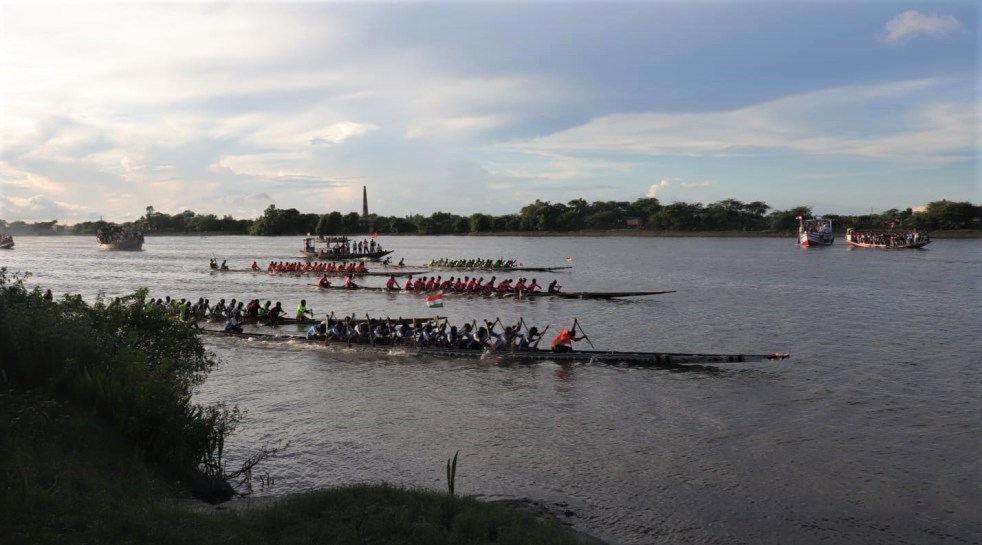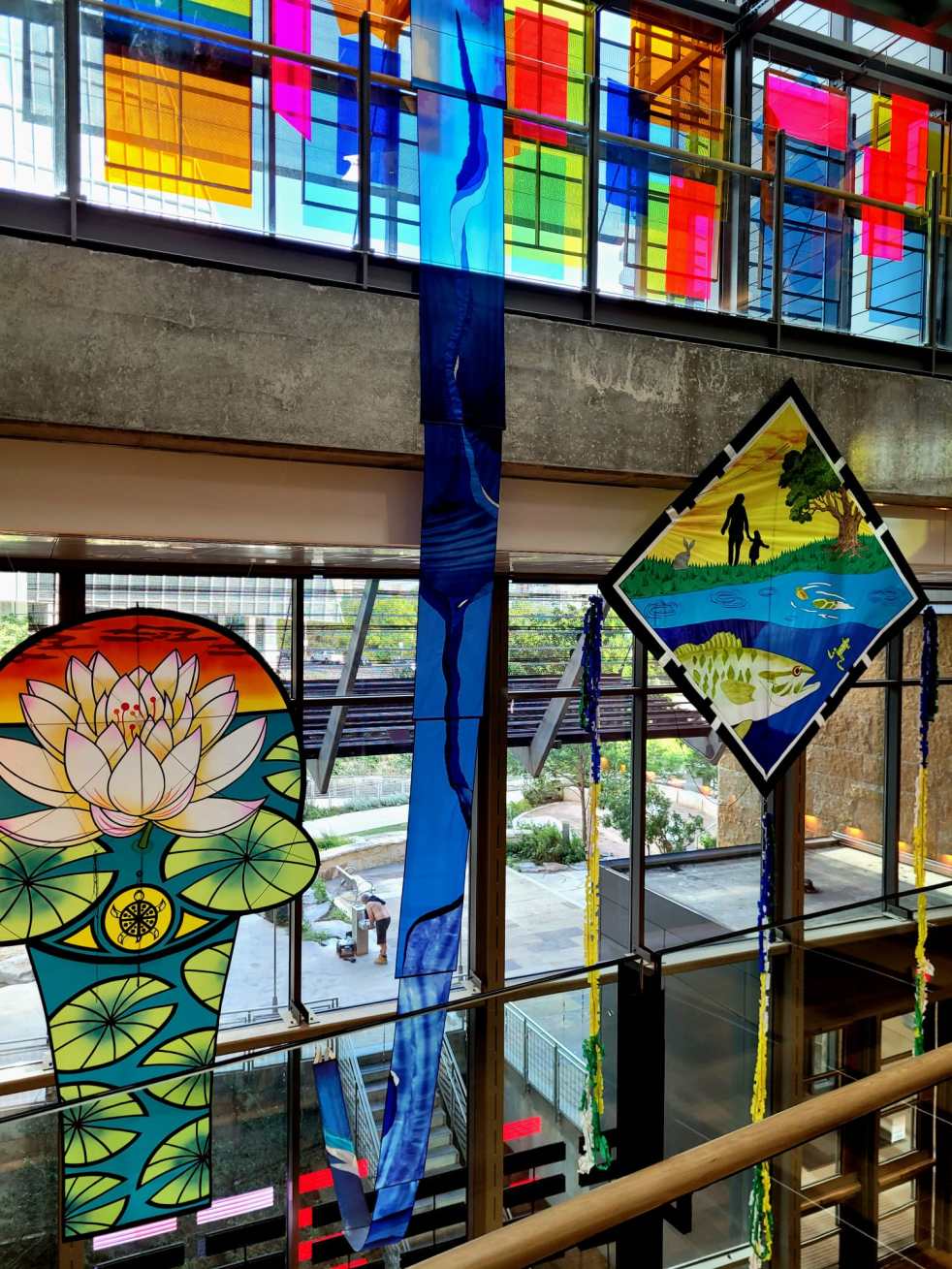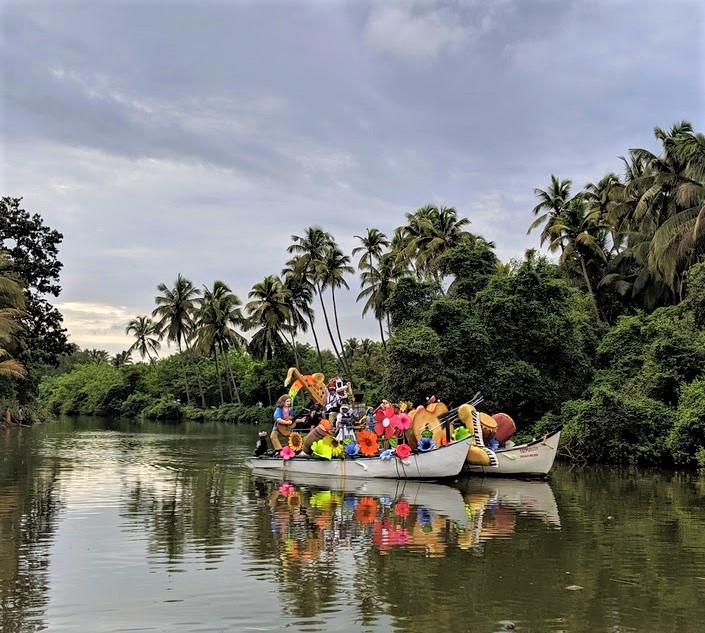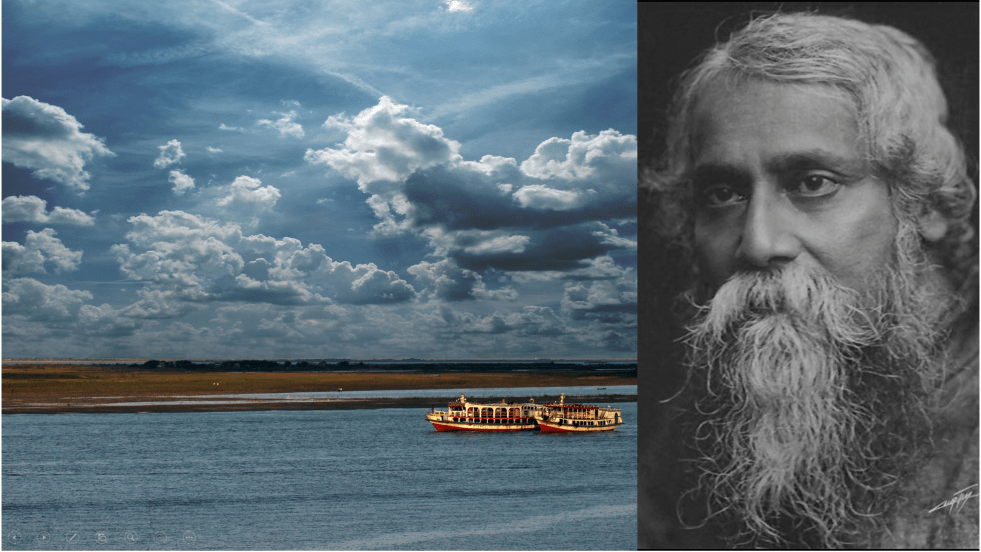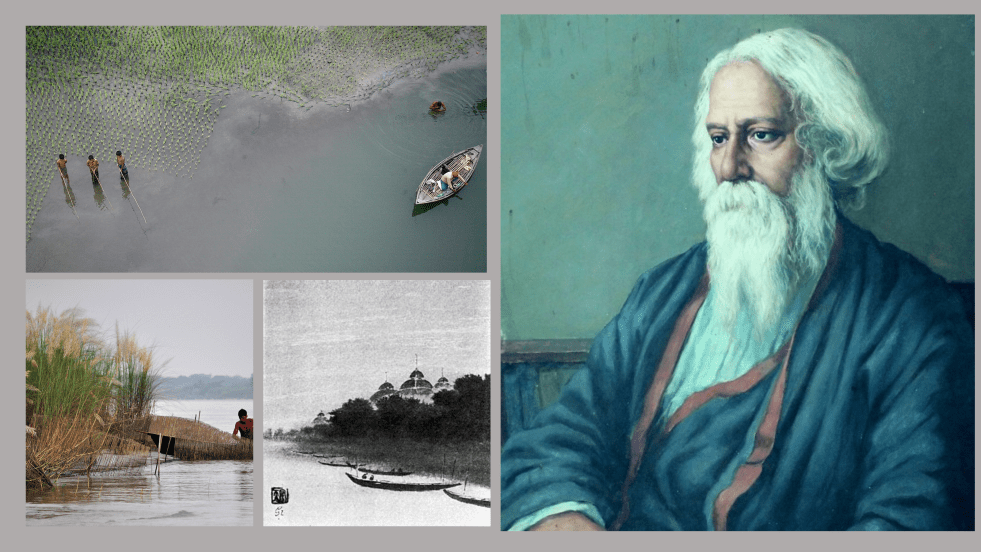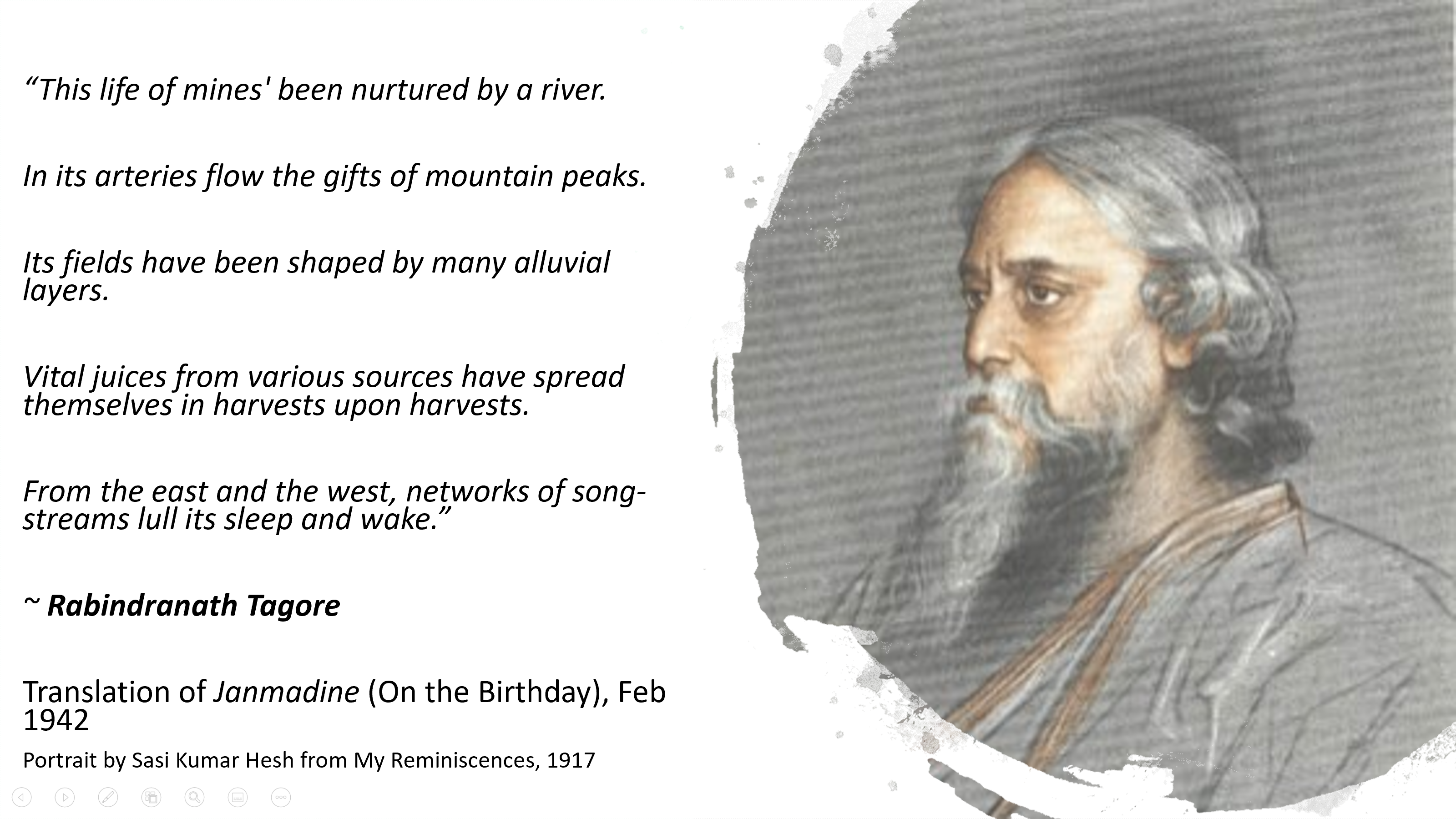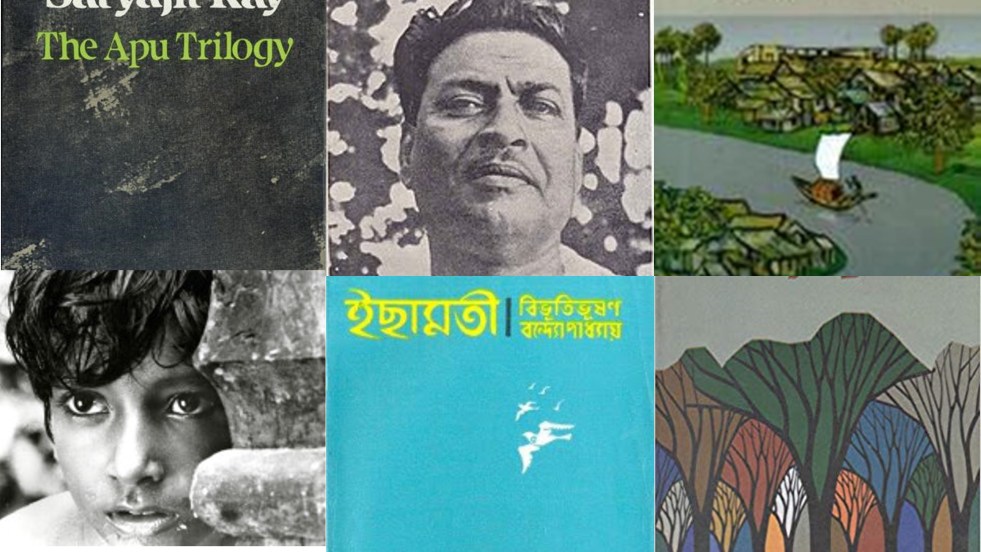When I first heard about a beautiful fish sanctuary right off the highway on Vaitarna river in Maharashtra, I was skeptical. Vaitarna river, despite flowing through dense Western Ghats forests, is highly polluted and encroached upon as it enters the Mumbai Metropolitan Region. Vaitarna river stretch off a highway is not the most idyllic of spots for a thriving fish sanctuary. But I was spectacularly wrong.
Continue reading “Vaitarna’s Community-Conserved Tilase Fish Sanctuary needs protection”Category: Art, Literature, Culture
Boat Races of Bengal: A River Carnival
In the Nadi-Matrik land (born to the river) of Bengal, where a blade of grass takes on layered meanings, river boats are not to be taken lightly. For boatmen who row down a vast river for days at end, a boat is more than a mode of transport. It is symbolic of the mortal body: frail, tattered and adrift, in search of a safe harbor.
Continue reading “Boat Races of Bengal: A River Carnival”Sacred Springs and Kites: Groundwater reaches the skies
Groundwater management is an area where almost all of the world seems to be faltering right now. Like in India, in Texas too groundwater is private property, and its use, regulation and conservation is a complex and often an unsuccessful task. Groundwater is a major source of water in Texas, providing about 60 percent of the 16.1 million acre-feet of water used in the state[i]. Cities like Amarillo, Bryan-College Station, El Paso, Lubbock, Houston and San Antonio use groundwater to supply water for homes and industry.[ii] This year, Texas has seen record hot months and lowering water tables with 99% of the state facing drought right now, and 21% area facing exceptional drought. Jacob’s Well, an iconic artesian spring, has officially ceased flowing for the fourth time in recorded history as a result of the ongoing drought and increased levels of groundwater pumping.
Continue reading “Sacred Springs and Kites: Groundwater reaches the skies”The magic of 24th June: Water Worship around the World
“Sao Joao, Sao Joao, Viva Sao Joao!”
The shouts were followed by unbelievably loud splashes in a red laterite well. The well itself was decked up like a bride. All along the way to Siolim in North Goa, on the banks of river Chapora, the road blossomed with people wearing big smiles and bigger floral wreaths, ‘Kopels’.
At Siolim, flows a tiny river called Anjuna. The ivory white church of St. Anthony overlooks a small bridge across Anjuna which was festooned extravagantly with ribbons, balloons and flowers. On the grassy riverbank, hundreds of chairs were laid out and a makeshift stage creaked under the weight of musicians, dancers, announcers, and impromptu performers jumping up from the audience. Continue reading “The magic of 24th June: Water Worship around the World”
“Padma, I have seen you many, many times.”
Part 2
(Part 1 is here)
Anna Akhmatova, who translated Rabindranath Tagore’s poems into Russian in the mid-1960s, described him as “that mighty flow of poetry which takes its strength from Hinduism as from the Ganges.” [i]
Although he explored the beauty of Upnishads and revered the “sacred current of the Ganges”, Tagore was not tied to them. A beacon of Hindu-Muslim unity, his poetry took strength from myriad precious details.
While he talks of Padma’s might, he also returns with a sense of belonging to smaller rivers like Kopai and Ichhamati. Continue reading ““Padma, I have seen you many, many times.””
He Spoke the Language of the Rivers: Rabindranath Tagore
Part 1
This was one of the last poems written by Gurudev Rabindranath Tagore. Bard of Bengal, Kabiguru, Bishwakabi: world knows him by many names. He reveled in life with the curiosity and wonderment of a child. In the Preface of Gitanjali (1912), Collection of poems which made him the first non-European to receive the Nobel in Literature, W. B. Yeats says, “Pearl fishers dive for pearls, merchants sail in their ships, while children gather pebbles and scatter them again. They seek not for hidden treasures, they know not how to cast nets.” This was for Tagore as much as the children. Poet, musician, novelist, painter, educator, freedom fighter, rationalist, modernist: the world was his canvas. Continue reading “He Spoke the Language of the Rivers: Rabindranath Tagore”
River as a Companion: Titash Ekti Nadir Naam
Part 2
Just as all festivities of a fisherfolk life are connected to the river, their dreams and nightmares are riverine too.
“For several days I’ve been noticing something different in the river’s flow pattern-familiar calculation just don’t seem to hold. The current where we knew it to be slanted is now straight, where we knew it to be straight is now slanted. There is no fish. The fish leaped a little away from where I laid the net, where I expected the flow. Finally, I went near the mouth of the Kurulia Canal. Found the current there turning like a top. I couldn’t sleep and all of a sudden I had this dream, Titash has gone dry.”
– Titash Ekti Nadir Naam, Adwaita Mallabarman (1956), translated by Kalpana Bardhan [i][ii] Continue reading “River as a Companion: Titash Ekti Nadir Naam”
Titash Ekti Nadir Naam: Swan Song of a River
Part 1
“Titash is a river’s name. Those living beside the river hardly know the etymological source of its name. They never tried to find out, they never felt any need to. There are rivers with significant names like Madhumati, Brahmaputra, Padma, Saraswati, Jamuna. And this one is called Titash!
No one will find its meaning in the dictionary. But is there any proof that the river might have been dearer to its people if it had a more literate, meaningful name? If a girl named Kajal-Lata is grandly renamed Baidurya Malini, her playmates will not be happy.”
“All the paths from the yards of Malo homes take them to the water of Titash. These are short paths. So short that a baby’s cry at one end can be heard by its mother at the other end. The pitter-patter of adolescent girl’s heart can be heard by the youth in their boats in the river. The only long road for them lies in the river’s midstream and it carries only boats.”
~ Titash Ekti Nadir Naam, Adwaita Mallabarman, 1956[i] Continue reading “Titash Ekti Nadir Naam: Swan Song of a River”
Bibhutibhushan Bandyopadhyay’s Ichhamati: River of Epiphanies
“The banks of my pleasant Ichhamati are dotted with tiny villages, wild flowers, green trees and bird nests. In the past five hundred years, so many fishermen have cast their nets in the river, so many houses have been built, so many babies came in the arms of their mothers to take a dip in the river and then in the old age found their last bed near the cool waters of the river. I can visualise the countless who have approached this peaceful river bank through centuries. I shall write a story of about all this. This story shall be called Ichhamati.”
~ Diaries of Bibhutibhushan Bandyopadhyay, Circa 1940s Continue reading “Bibhutibhushan Bandyopadhyay’s Ichhamati: River of Epiphanies”

